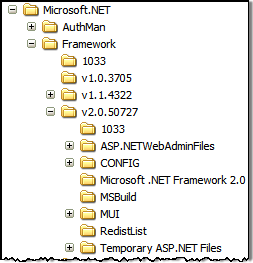
One of the commercial applications I've worked on over the last few years has received consistent feedback from uses who dislike tree view controls. Many of these users are working with terminal emulators on a daily basis, so I first suspected that switching to a GUI came as a shock.
I did some research on tree controls and usability, but didn't uncover much information. Actually, many articles I found herald the tree view as the ideal solution for categorizing and drilling into large amounts of hierarchical information. Only Alan Cooper's book "About Face" turned up a caveat:
"Programmers tend to like this presentation [speaking of Tree controls]. It is often used as a file system navigator, and some find the format of the display to be effective – certainly more effective than scattering icons around in multiple windows on the desktop. Unfortunately, it is problematic for users because of the difficulty many nonprogrammer users with understanding hierarchical data structures. In general, it makes sense to use a treeview, no matter how tempting it may be, only in the case where what is being represented is "naturally" thought of as a hierarchy (such as a family tree). Using a treeview to represent arbitrary objects organized in an arbitrary fashion at the whim of a programmer is asking for big trouble when it comes to usability."
I've changed my initial suspicion. Now I suspect users don't have a problem with the mechanics of the tree view, but rather with the content of the tree view. It's not a case of how to work with the control, but where to start to get to the right node in the tree.
The more I think about the problem, the more I realize I face the same difficulty on an almost daily basis. When I call my cell phone company, I have to fit my specific problem into one of the three broad categories provided by the soothing sounds of an automated voice response system. If I initially choose the wrong category, I'm pretty well screwed and need to start over. This is frustrating.
A software alternative to the tree view is a search feature. Allow the user to get to the lowest level of detail without navigating a hierarchy of unfamiliar categories. This often works in the real world, too. If I can't find something in the categorized aisles of a hardware store, I ask someone who works there.
Interesting and somewhat related post: Luke Wroblewski has a look at the history of Amazon's Tab Navigation. I don't remember the last time I went to Amazon to browse categories, I always search for a specific item. It's well that they do away with tabs.
Searching capability is vital these days. I wonder, will System.SearchEngine will ever appear as a namespace in the .NET library?

 OdeToCode by K. Scott Allen
OdeToCode by K. Scott Allen